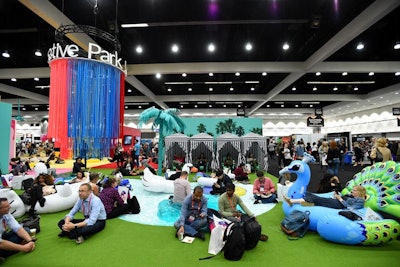
The Max Community Pavilion gave attendees a place to relax in an unconventional, inspiring setting.
Photo: Courtesy of Adobe
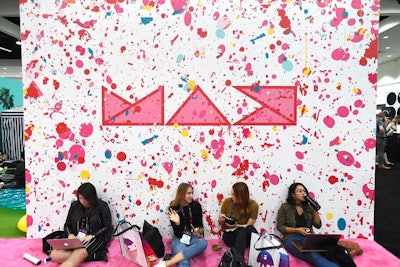
The pavilion featured pop-up art from conference speakers—and plenty of places to charge phones.
Photo: Courtesy of Adobe

In one installation, guests shot water guns full of paint at a white office setting.
Photo: Courtesy of Adobe
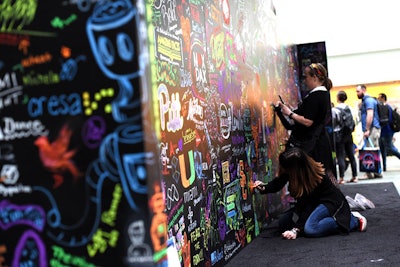
Adobe Max attendees were invited to sign and decorate an oversize chalkboard.
Photo: Courtesy of Adobe
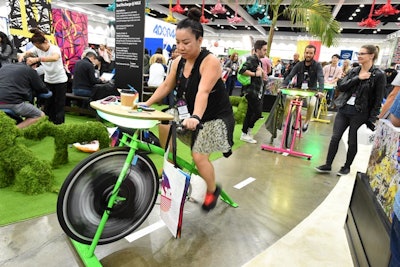
Stationary bikes allowed guests to unwind.
Photo: Courtesy of Adobe
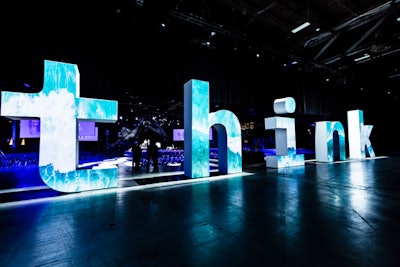
Leading into the opening session, giant “think” letters had video mapping.
Photo: Bill Virun/Visually Attractive, Inc.
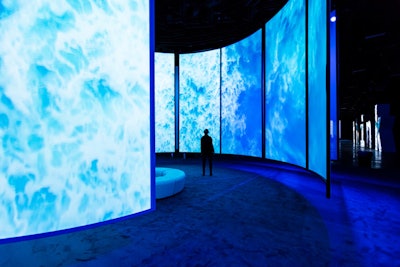
The Think Gallery showcased six of IBM’s projects using 18-foot-high digitally mapped video screens that surrounded visitors and allowed them to sit and think about what they were watching.
Photo: Bill Virun/Visually Attractive Inc.
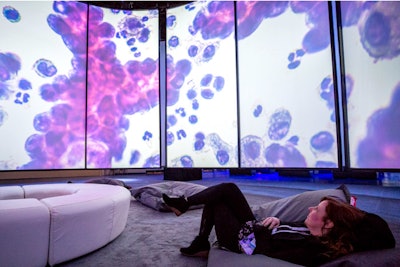
“We were challenged by the IBM conference and brand teams to look ahead, take risks, break rules, explore, experiment, and discover,” said Chris Drury of Drury Design.
Photo: Richard Brian/Las Vegas Review-Journal
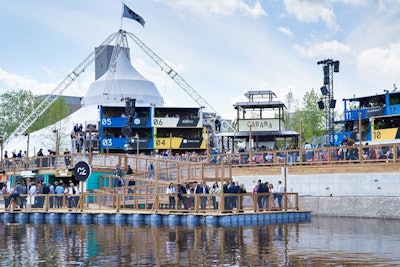
The seventh edition of the conference took over Montréal's Arsenal venue May 23 to 25. An outdoor space, known as the C2 Village, included a tiki bar in a casual atmosphere that encouraged guests to mingle. C2 sponsors had their own lounges in numbered shipping containers. Guests could also mingle on the C2 Melbourne dock, a nod to the conference's expansion to Australia. Presentations were held in the Cirque du Soleil 360 Big Top pop-up circus tent, which debuted last year.
Photo: Andrew Moore
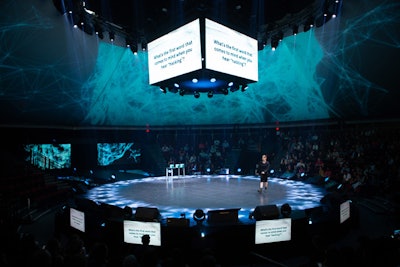
The 1,400-seat tent was designed so that no spectator sat more than 13 rows from the circular stage. Presentations from speakers, including former Army intelligence analyst and whistleblower Chelsea Manning, were enhanced with 360-degree surround video projections and sound.
Photo: Allen McEachern
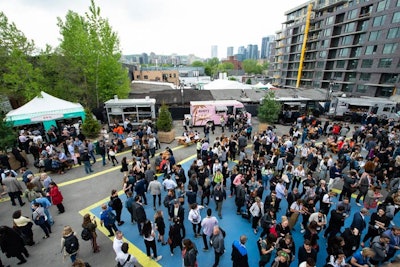
The C2 Village housed numerous local food trucks that offered some of Montréal's trendiest eats. As the entire conference was cashless, attendees could buy food with a credit card or with their Klik smart badges.
Photo: Agnieszka Stalkoper
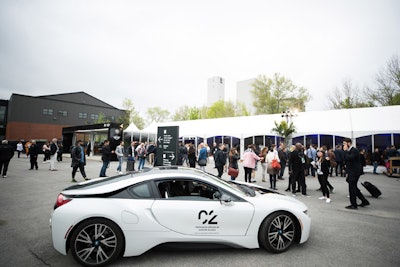
Outside of the event entrance, guests could test drive BMW 530e cars, which featured C2 branding. BMW and Mini were the conference's official sustainable mobility partners.
Photo: Jimmy Hamelin
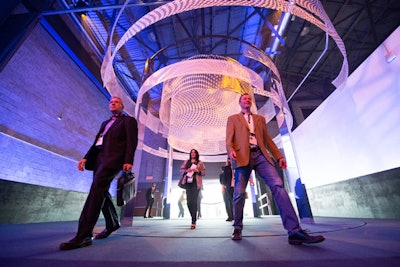
The event took on a literal meaning with the theme "Transformative Collisions": As soon as attendees walked into the Arsenal, they could be thrown off balance by walking over a rotating platform.
Photo: Agnieszka Stalkoper
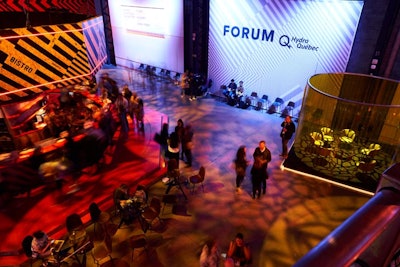
Guests could schedule meetings and lunches in "cabins," transparent cylinders that blocked out much of the general noise in an area near the entrance. The venue also featured a rotating carousel bar that served drinks and food.
Photo: Andrew Moore
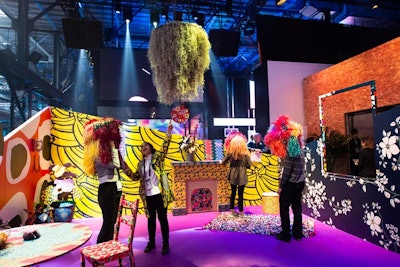
Each year the conference introduces new lab experiences. This year, one of the most eye-catching experiences was the Primal lab, which invited attendees to wear festive, Dr. Seuss-style augmented-reality helmets to see a colorful house interior come to life as a surreal jungle. Legrand said the goal of this lab was to make people reconnect with their senses. "With this element, people have their eyes, ears, smell, taste, and touch stimulated," she said. "That triggers the conversation for them of how they can bring the five senses back into the workplace."
Photo: Agnieszka Stalkoper
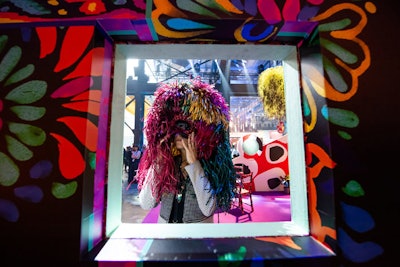
The colorful experience also served as a social media-friendly photo op for attendees.
Photo: Agnieszka Stalkoper
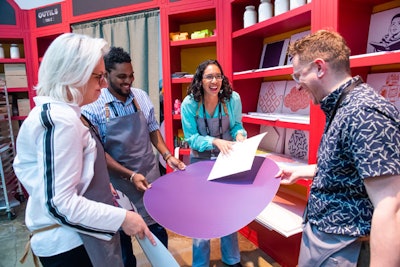
At a lab called Cookie, groups brainstormed ideas to make and market their own cookies in a pop-up kitchen. The cookies were displayed in jars in a circular wall showcase outside of the kitchen for other attendees to try. After trying a cookie, guests were encouraged to write a dream or idea on a Post-it, which would be used as inspiration for new cookie ideas throughout the conference.
Photo: Agnieszka Stalkoper
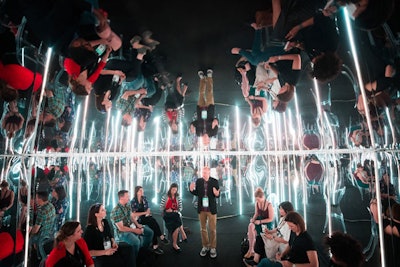
The Transparent lab was held in a mirrored room, where a moderator led a conversation about diversity and bias in the workplace.
Photo: Jimmy Hamelin
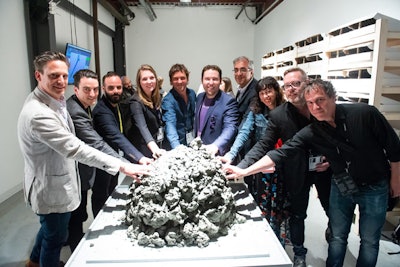
Other interactive stations included art installations that were chosen to fit the event theme. At the Migration installation—a traveling clay sculpture from artist Mat Chivers—an artificial intelligence machine designed by Element AI digitally scanned more than 2,000 handprints, which will travel to Concordia University to be kiln fired this summer. The digital scans will be used as training data, resulting in a single file output—the first of its kind created by an A.I. machine—that will be cut into a block of impactite (impact glass) using robot milling technology.
Photo: Agnieszka Stalkoper
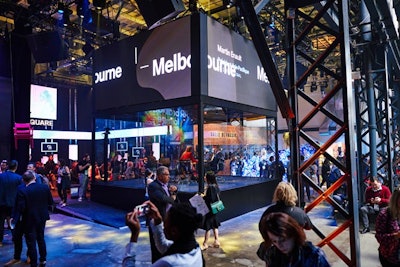
In the Aquarium space, attendees could wear headphones and watch the interviews that took place in the glass cube studio.
Photo: Andrew Moore
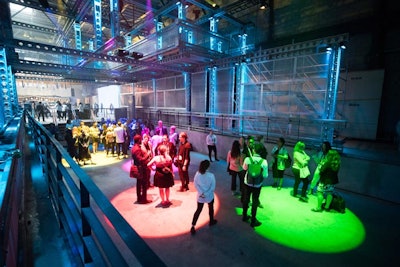
Conversation Market Nespresso, an industrial space sponsored by the coffee brand, held daily collaborative sessions. Participants were separated into groups and were invited to discuss topics on a screen that corresponded to the color of the circle where they stood. Topics included the future of urban design, digital privacy and security, and how to reduce one's ecological footprint.
Photo: Jimmy Hamelin
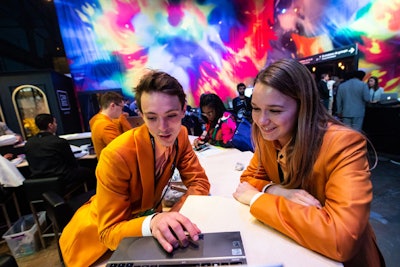
Attendees could schedule "brain dates," one-on-one conversations on topics both sides wanted to discuss. They could schedule the conversations before the conference started using the event's Klik platform, or on site with the help of a concierge. The area featured a rainbow cloud-style backdrop. "Brain dates" were created by E180.
Photo: Agnieszka Stalkoper
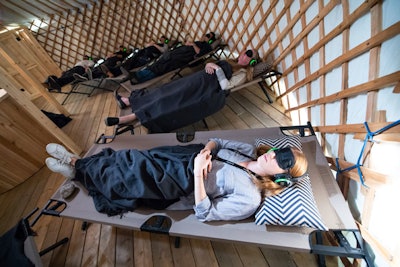
Attendees looking to take a break from the conference chaos could relax in a restored vintage Airstream in a "Breathing Space" relaxation area. The trailer was provided by Art de la détente (Art of Relaxation), a company that specializes in personalized relaxation areas.
Photo: Agnieszka Stalkoper
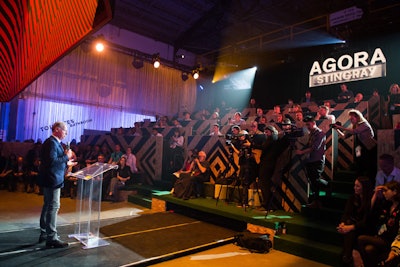
Attendees unable to reserve a spot in the 360 Big Top tent could watch the same presentation in the Agora Stingray forum, a seating area in the warehouse. The area also hosted a press conference, where C2 International announced a new partnership with the Melbourne Convention and Exhibition Centre. The new partnership grants the venue exclusive access to C2 International’s experiential design platform and signature labs.
Photo: Agnieszka Stalkoper
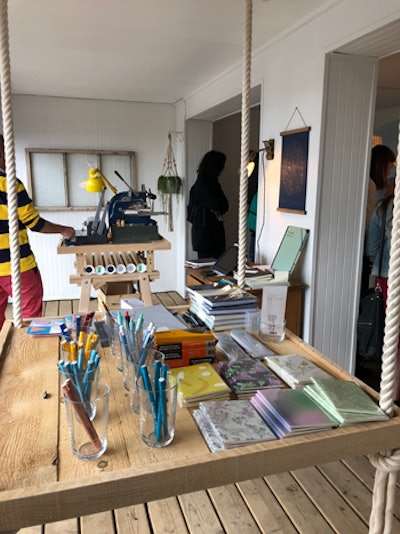
At an outdoor station, guests could create their own notebooks with materials provided by Montréal-based stationery store Baltic Club.
Photo: Ian Zelaya/BizBash
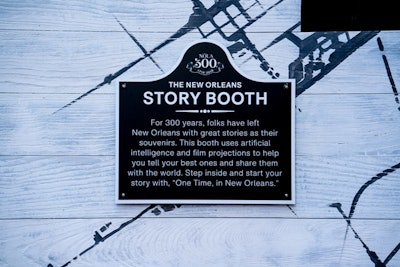
“The ‘One Time, in New Orleans’ campaign is built around the singular idea that unlike other cities, which are built on concrete, New Orleans is built on 300 years of stories. Everyone that visits New Orleans leaves with a story that could only happen here,” Romig said.
Photo: Courtesy of 360i
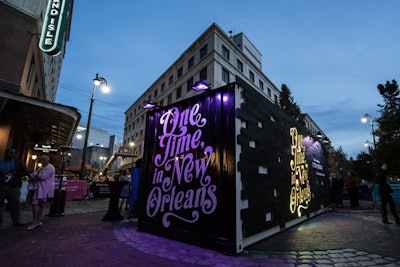
Augmented-reality-enabled storytelling booths in New Orleans are made from repurposed shipping containers that were outfitted using found materials such as wood and steel from the city.
Photo: Courtesy of 360i
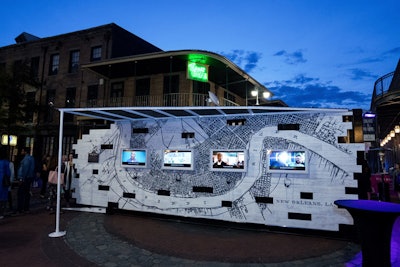
Visitors can enter the booths and tell their stories, while images or video content that’s related to their tale are projected in the background.
Photo: Courtesy of 360i
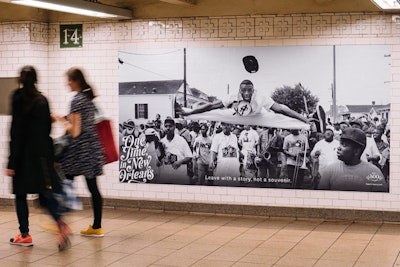
The new tourism campaign includes national advertising. On display in the Union Square subway station in New York is archival photography from the city’s history with the tagline, “Leave with a story, not a souvenir.”
Photo: Courtesy of 360i
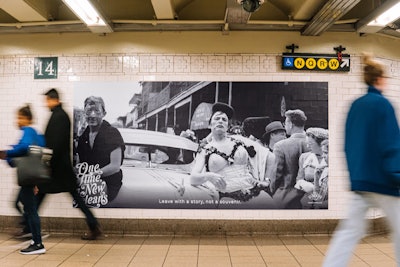
“The entire campaign is in celebration of the New Orleans tricentennial and harkens back to the idea of storytelling, a driving force of the city's history and future,” Romig said.
Photo: Courtesy of 360i
















